
This article describes the Economic History of Hamilton, Ontario .

This article describes the Economic History of Hamilton, Ontario .
In the beginning, the Head-of-the-Lake (Present day Hamilton) [1] was covered in forest. In 1815 a chopping mill became in the area. [2] Growth of the area was aided in 1827 by a channel cut to link Burlington Bay directly with Lake Ontario, thus improving its marine transportation. [3] In 1833, George Hamilton's settlement was incorporated as a police village. On January 8, 1833 the Legislature passed a further act "To define the limits of the Town of Hamilton, in the District of Gore, and to establish a Police and public market therein." [4] When the Town of Hamilton was incorporated in 1833, one of the first orders of business, after a closely fought election where 3 out of the 4 candidates had no opposition, was to find a suitable place for the town board to meet. For the first few years they made do with meeting in local taverns such as Thomas Wilson's Inn on the corner of John and Jackson Streets. [5] Also in 1833 (February 16), The Garland, a local newspaper, published a synopsis, Hamilton contained "about one hundred and twenty dwelling houses and upward of one thousand inhabitants" and then went on to list 4 public buildings, 7 taverns, 16 stores, 2 watchmakers, 2 saddlers, 4 merchant tailors, 4 cabinet makers, 4 boot and shoe makers, 2 bakers, 4 newspapers, 1 druggist, 1 tin and sheet iron manufactory, 1 hatter and 3 millineries. [3]
Hugh Cossart Baker, Sr. established the first life insurance company in Canada 21 August 1847; the Canada Life Assurance Company. [4] The newly renamed Great Western Railway (Ontario) became Hamilton's first functioning railway in 1854. Completion of this railway and the Niagara Suspension Bridge transformed Hamilton into a major centre and part of the American immigration route from New York City or Boston to Chicago or Milwaukee. [4] The following season in 1856, Daniel C. Gunn engine shop on Wellington Street North, produced the first Canadian-built locomotives. [4]

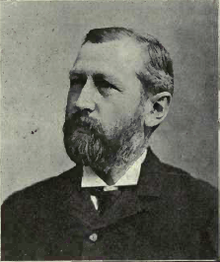
In 1862, The city invested in the Great Western Railway (Ontario) but the government of Canada favoured the rival Grand Trunk Railway. Also, at the end of the Depression (1857-1862), population dipped downward in Hamilton and the city could not meet the interest on its bonds, many of which were held by British investors. To temporarily save the city from its creditors, Henry Beasley removed the assessment rolls, thus preventing a levy of special tax. Foundries and machine shops associated with the Great Western Railway failed and several established wholesalers closed their accounts. Daniel C. Gunn's locomotive works went bankrupt, but the manufacturers of farm implements and stoves-the mainstays of iron foundries- were able to weather the crisis. Those owned by Dennis Moore and the Copp brothers endured, but their employees suffered wage cuts and layoffs. Canadian patent laws and the underemployed workers skilled in machinist trades lured an important new industrial enterprise from the U.S.A.- the manufacture of sewing machines by Richard Wanzer. From this development there evolved the ready-made clothing industry, which William Eli Sanford introduced locally. From judicial village to commercial town to railway centre, Hamilton moved to an ever-stronger dependency on industry. [6] Then in the 1870s decade; Confederation era Hamilton boosters lose a commercial and financial edge to Toronto and consciously shift to the economic strategy of attracting industry. [6]
Hamilton unionists and other working-class people gave birth in 1872 to the Nine Hour Movement, urging the government to limit working hours to nine per day. [2]
Also in 1872, the Bank of Hamilton was established. It lasted until 1924. The Bank of Hamilton merged with The Commerce (later to become the Canadian Imperial Bank of Commerce, or CIBC) on January 2, 1924. It was one of the last surviving banks in Canada that was not headquartered in Toronto or Montreal. [7]
One of the oldest companies still in operation today (January 2007) in the Hamilton region got its start in 1882. Ernest D'Israeli Smith, (E. D. Smith), after being frustrated by paying to have his fruit transported from the Stoney Creek, Ontario area, founded a company to market directly to wholesalers and eliminate the middleman. E. D. Smith & Sons Ltd. has sold manufactured preserves and jams since the early 1900s. Its namesake served as the Conservative MP for Wentworth around the turn of the 20th century. [4]
Robert B. Harris (along with his brother John M. Harris) established the Hamilton Herald newspaper in 1889, beginning publication on August 1 and becoming Hamilton's first one-cent newspaper. Hamilton then became a 3-newspaper town: The Hamilton Spectator , The Hamilton Times and The Hamilton Herald. [8]
In 1847, Hamilton's first large department store, The Right House, opened at a location on James Street. That building became Oak Hall in 1893 when the store moved to the north-west corner of King Street East and Hughson. [9]
Hamilton also played a role in the early development of the telephone. First on June 20, 1877, Hugh Cossart Baker, Jr. started up the first commercial telephone service in Canada in the city of Hamilton [3] and then in 1878, he made the first telephone exchange in the British Empire. This was also the second telephone exchange in all of North America. [3] The following season on 15 May 1879 he made Hamilton the site of the first commercial long distance telephone line in the British Empire. [3] In 1880, (April 29) Hugh Cossart Baker, Jr. received a charter to build a national telephone company in Hamilton, Ontario. It was called the Hamilton Telephone Company and this was the charter that enabled the creation of the Bell Telephone Company in Canada. Hugh Cossart Baker, Jr. became the manager of the Ontario division until he retired in 1909. [10] Baker learned of Alexander Graham Bell's invention in 1877 at the Philadelphia International Exposition and from there decided to test the communication tool in Hamilton. [10] He leased four telephones for himself and his chess partners and on August 29, 1877, the telephone replaced the telegraph as the means to discuss their chess moves. [10] Baker is also credited with helping to create the Hamilton Street Railway Company, the Hamilton Real Estate Association and the Canada Fire and Marine Insurance Company - all before he was 30 years old. [10]

Sir John Morison Gibson formed The Dominion Power and Transmission Company in 1896, that brought hydroelectric power, for the first time, to Hamilton from their plant at DeCew Falls. [8] "One big reason" for the almost 75% increase in the population of Hamilton between 1901 and 1912, boasted Sir John Morison Gibson of Dominion Power and Transmission Company, was "Cheap Electric Power Furnished By Us." This simplistic explanation for the development of Hamilton in the early twentieth century leaves much unexamined, but one conclusion cannot be disputed. In the perception of the Hamilton public, a view certainly fostered by Gibson and his fellow hydroelectric promoters (John Patterson, John Dickenson (Ontario MPP), John Moodie, Sr. and John Sutherland; together known as "The Five Johns".), Hamilton was no longer regarded the Birmingham of Canada or the Pittsburgh of Canada Hamilton was now, as the title of a 1906 promotional booklet on the city proudly proclaimed, "The Electric City." [11] Power was sent twenty seven miles from DeCew Falls, St. Catharines, using water from the old Welland Canal. New industries, such as the forerunners of the Steel Co. of Canada (Stelco) and Canadian Westinghouse, were attracted here by the cheaper, more efficient power. One time this Company controlled hydro power from Brantford to St. Catharines, including the Hamilton Street Railway and the area's radial lines. [8] Sir John Morison Gibson became the Lieutenant-Governor of Ontario in 1908. (1908–1914). [9]
The city's promotional booklets were stressing three key areas to lure new business and heavy industry to the city :
By 1938, with a population nearing 155,000 inhabitants and home to 500 + manufacturing plants, (centre of Canadian Steel and Electronic activities), the city's promotional brochures were boasting that Hamilton was home to more than fifty flourishing branches of United States and British industries, with invested capital approximating $150,000,000. They were also advertising that "Hamilton was home to the cheapest hydro power in the entire world." As well, any industries contemplating establishment in Canada were to write to J.H. Moore, Industry Commissioner, T.H.& B. Railway Station. At that time Hamilton had attracted more American industrial capital than any other Canadian city.
The promotion of Electrical power helped remake Hamilton between 1895 and 1920 and the shift of Banking and Insurance from Hamilton to Toronto accentuated the Industrial focus. [13]
The first Westinghouse manufacturing operation outside of the United States was established in Hamilton, Ontario in 1897 on Sanford Avenue, one year after The Dominion Power and Transmission Company was formed in Hamilton. This marked a new industrial era for Hamilton. It was then incorporated in 1903. [2] Company founder George Westinghouse set up a factory to build air brakes for the booming rail industry. During the first two decades of the 20th century, several noteworthy engineers worked at Westinghouse, Hamilton, including Louis Hamel Cooke, [14] Herbert Bristol Dwight, William Frederick McLaren, [15] and Frank Elbert Harold Mowbray. [16] Eventually the company was producing from its Hamilton plants electric ranges, refrigerators and washing machines. During each of the wars it was also producing guns, ammunition, anti-radar devices and bomb sights. At its peak in 1955, Westinghouse employed 11,000 people in Hamilton. (second only to Stelco) [17]
International Harvester becomes the second major United States industry to locate in Hamilton, Ontario (1902). [2] Originally known as Deering Harvester, the company plant sprawled along the Hamilton waterfront and claimed to be the "largest agricultural implement works in the British Empire." The plant was also involved in wartime production of specialized military items. The company started building heavy duty diesel trucks in Hamilton in 1959. The first to roll off the line was delivered to Dofasco, complete with a Rolls-Royce engine. [18] Hamilton won over a number of Canadian cities when it successfully lured International Harvester. The reasons the company cited for its selection of Hamilton were as follows: it had waterside property that enabled the firm to control its own docks, its proximity to the steel industry, railway connections & the Cataract Power Company supplied them with cheap energy. [13]
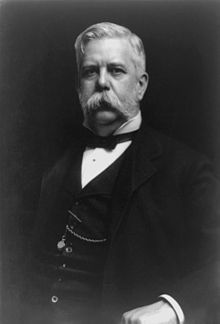
In 1902, Canadian Otis Elevator Company is formed (August 22) on Victoria Avenue North. [2] For many years Hamilton was home to the largest single elevator manufacturing facility in the world. The workers produced all kinds of elevators, escalators and later, forklifts. In 1969, the company took over the old Studebaker plant. It was a return home for Otis, which had built the 350,000-square-foot (33,000 m2) facility for wartime production of anti-aircraft guns and other military equipment. [17]
In 1903, Canadian Canners Consolidated Companies Limited (later Canadian Canners Limited) was formed. [2] The steel industry continued to grow and finally consolidate through this period, some combining to form the Steel Company of Canada (Stelco) in 1910. [2] Dominion Steel Casting Company (Dofasco) established in 1912. Later named Dominion Foundries and Steel, the company merged with its subsidiary, Hamilton Steel Wheel Company in 1917. The name was officially changed to Dofasco Inc. in 1980. [2] In 1912, National Steel Car is established in Hamilton. [2] Builders of reliable freight and passenger train cars and equipment on Kenilworth Avenue North. [19] Also by 1912, with 4.5 miles (7.2 km) of dockage, Hamilton is second only to Montreal in shipping. [2]
The following season 1913, Procter & Gamble Manufacturing Company (based in Cincinnati) purchased 7 acres (28,000 m2) of land and 2 acres (8,100 m2) of water on the south side of Burlington Street between Depew and Ottawa Streets. This event marked the beginning of Procter & Gamble's operations outside of the United States. [2] In 1914, Construction started on the Procter & Gamble Hamilton plant, which cost $1 million and consisted of seven buildings: the Crisco building, the boiler house, the gas plant, the soap building, the hardening plant, the kettle and glycerin house, and the machine shop. [2] By 1915, Procter & Gamble officially opens Hamilton plant, employing 75 workers who made six different products. [2]
In 1919, the Hoover Suction Sweeper Company builds a plant in Hamilton. [2] and Firestone Tire and Rubber Company of Canada is established. [2]
In 1922, the Beech-Nut Packing Company (makers of the Life Savers candy), establishes Canadian operations in Hamilton on Cumberland Avenue near Sanford. [2] It was reported that when the company first started producing candy it was so pleased with the treatment from the city that it distributed free boxes of gum on the street and to every retailer in the city. By 1969 the company was producing more than a billion lifesavers candies a year in 26 flavours. [17]

Three well-known Canadian businesses got their start in Hamilton. First, In 1934 Hamilton is the birthplace of Canadian Tire. Two brothers John W. Billes and Alfred J. Biles with a combined savings of $1,800, buy Hamilton Tire and Garage Ltd. and rename it "Canadian Tire" because it sounds big. (1934-first official associate store opens up in Hamilton Ontario). [20] Second, In 1956 Hamilton was the birthplace of the Pioneer gas station. November 29, 1956, on Upper James Street. Today (January 2007) there are over 140 locations across Ontario (8% market share in Ontario) making it one of Canada's largest independent gasoline retailers. [20] Third, Hamilton became the birthplace of the Tim Hortons donut chain in 1964. The original store ("Store #1") still operates on Ottawa Street North. [21]
On August 18, 1948, surrounded by more than 400 employees and a battery of reporters, the first vehicle, a blue Champion four-door sedan, rolls off the Studebaker assembly line. [18] The company was located in the former Otis-Fenson military weapons factory off Burlington Street East, which was built in 1941. The Indiana-based Studebaker was looking for a Canadian site and settled on Hamilton because of its steel industry. The company was known for making automotive innovations and building solid distinctive cars. 1950 was its best year but the descent was quick. By 1954, Studebaker was in the red and merging with Packard, another falling car manufacturer. In 1963, the company moved its entire car operations to Hamilton. The Canadian car side had always been a money-maker and Studebaker was looking to curtail disastrous losses. That took the plant from a single to double shift - 48 to 96 cars daily. The last car to roll off the line was a turquoise Lark cruiser on March 4, 1966. [18] Studebaker officially shuts down the next day on March 5, 1966 as its last car factory. [22] It was terrible news for the 700 workers who had formed a true family at the company, known for its employee parties and day trips. It was a huge blow to the city, too. Studebaker was Hamilton's 10th largest employer at the time. [18]
Following The Depression and World War II, industry and unions prepared to do battle in Hamilton. The strike for Stelco lasted 80 days. Confrontations between strikers and strike-breakers were frequent and often physical. Stelco management and many Hamiltonians appealed to Mayor Sam Lawrence to call for extra police to protect strike-breakers. The Mayor refused and stated publicly that 'he was a labour man first and mayor second'. Stormy strikes were waged in town by other companies that year as well, these include Firestone, Westinghouse and the Hamilton Spectator. In his lifetime Sam Lawrence worked closely with left-wing radicals to improve the lot of workers. He campaigned for an eight-hour work day, unemployment insurance, national health insurance, old age security benefits and government ownership of important industries and utilities. [10]
On July 15, 1946, after a meeting at the Playhouse Theatre, on Sherman Avenue North, Local 1005 members of the United Steelworkers of America at Stelco marched to the plant gates to start the famous strike of 1946. The fight was over Union recognition, a 40-hour work week and wages. With the help of Hamilton's community this struggle changed Canadian Labour history. It forced employers to accept collective bargaining and helped start a mass trade union movement in Canada. [23] [24]
Hamilton has lost some of its biggest industrial employers over the years. Several reasons have been cited for the job losses such as the high dollar, high energy prices and overseas competition; a challenge that all of North America has had to learn to deal with, not just Hamilton, Ontario. The city has been able to weather the storm and recover better than most North American cities and the three primary reasons are; its close proximity to Canada's largest and wealthiest market, Toronto, its close proximity to the Canada-U.S.A. border and third, it being home to the busiest Canadian Great Lakes port.
In 2006 Hamilton saw closures to plants such as Camco, Rheem Canada and the Procter & Gamble distribution centre. Several other companies saw a dramatic decrease in their workforce such as Trebor Cadbury Allan, Siemens Canada and Wentworth Mold.
| Company | Start date | Left town |
|---|---|---|
| Dominion Glass Company | 1864 | 1997 |
| Otis Elevator Company | 1902 | 1987 |
| International Harvester | 1902 | 1992 |
| Canadian Canners Limited | 1903 | 1986 |
| Canadian Westinghouse Company Limited | 1903 | 1997 |
| Procter & Gamble Manufacturing Co. | 1913 | 1998 |
| Hoover Suction Sweeper Company | 1919 | 1972 |
| Firestone Tire & Rubber Co. of Canada | 1919 | 1988 |
| Studebaker of Canada | 1948 | 1966 |
| Susan Shoe Industries Limited | 1955 | 1994 |

Hamilton is a port city in the Canadian province of Ontario. Hamilton has a population of 569,353, and its census metropolitan area, which includes Burlington and Grimsby, has a population of 785,184. The city is approximately 45 kilometres (28 mi) southwest of Toronto in the Greater Toronto and Hamilton Area (GTHA).
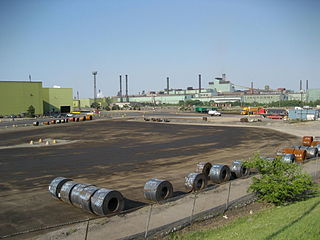
ArcelorMittal Dofasco is a steel company based in Hamilton, Ontario, Canada. Dofasco is a standalone subsidiary of ArcelorMittal, the world's largest integrated steel producer.

Stelco Holdings Inc. is a Canadian steel company based in Hamilton, Ontario. Stelco was founded in 1910 from the amalgamation of several smaller firms. It continued on for almost 100 years, until it filed for bankruptcy in 2007 and was bought by U.S. Steel. In 2016, the company was sold to Bedrock Industries of the United States, which took the company public. The company made its debut on the Toronto Stock Exchange on Nov. 3, 2017.

Hamilton, from the point at which it was first colonized by settlers, has benefited from its geographical proximity to major land and water transportation routes along the Niagara Peninsula and Lake Ontario. Its strategic importance has created, by Canadian standards, a rich military history which the city preserves.

Studebaker of Canada Ltd. was the name given to Studebaker Corporation's Canadian manufacturing arm.
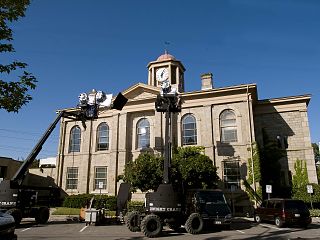
Hamilton, Ontario, Canada, has become a popular destination for the television and film industry, attracting dozens of film and television productions each year.

This article is about the Economy of Hamilton, Ontario.
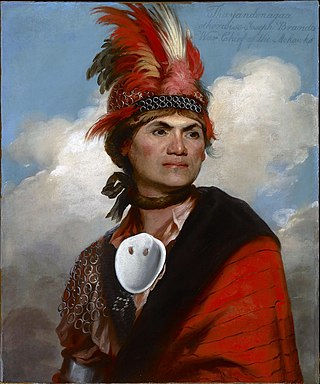
Below is a timeline of events in Hamilton, Ontario, Canada.
Hugh Cossart Baker Jr. was a businessman and telephone pioneer.

Burlington Street is a partially at grade and elevated roadway in Hamilton, Ontario, stretching along the south shore of Hamilton Harbour in Lake Ontario. Burlington Street has four different statuses along the route. In its western terminus, it is a collector route ending at Bay Street North. Upon the intersection at Wellington Street, the road becomes an arterial route with four lanes. The Street ends at Parkdale Avenue. On October 14, 2015, city council approved the renaming of the upper portion of Burlington Street from 165 meters east of Ottawa St to the QEW to Nikola Tesla Boulevard.

James Street is a Lower City arterial road in Hamilton, Ontario, Canada. It starts off at the base of the Niagara Escarpment from James Mountain Road, a mountain-access road in the city. It was one of many arterials in the central business district converted to one-way operation in 1956 when the city retained Wilbur Smith and Associates to develop a Traffic and Transportation Plan. Parts of it were restored to two-way operation in 2002. It extends north to the city's waterfront at the North End where it ends at Guise Street West right in front of the Harbour West Marina Complex and the Royal Hamilton Yacht Club.

Victoria Avenue is a Lower City arterial road in Hamilton, Ontario, Canada. It starts off as a ramp and part of a Mountain-access road, the Claremont Access, on Hunter Street East in the Stinson neighbourhood. It's also a one-way thoroughfare that flows north through the Landsdale and the city's North End industrial neighbourhood past Burlington Street East where it ends at Pier 11.

Catharine Street is a Lower City collector road in Hamilton, Ontario, Canada. It starts off at Charlton Avenue East at Woolverton Park in the Corktown neighbourhood as a one-way street (southbound), tunnels underneath the Hunter Street Railway bridge and stretches up to Barton Street East where it then turns two-way and cutoff by the CN Railway lines that cut through Strachan Street Park one block north past Barton. Catharine Street then resumes again on Strachan Street East, north of the Park again as a two-way road for 3 blocks and interrupted again at Picton Street East, the site of St. Lawrence Elementary School and resumes again north of this property on Macauley Street East, again as a two-way street for another 3 blocks where it's interrupted for a third time at Brock Street, the site of Eastwood Park and Eastwood Arena. Catherine Street resumes again north of Eastwood Park on Guise Street East and ends at the city's North End waterfront, the site of a Royal Canadian Navy base and Pier 9.

Wentworth Street is a Lower City arterial road in Hamilton, Ontario, Canada. It starts off at the base of the Niagara Escarpment (mountain) on Charlton Avenue East just south of the CP lines and runs right through the city's North End industrial neighbourhood and ends north of Burlington Street East at Pier 14, which one time was used by International Harvester (1902–1992).

Sherman Avenue is a collector road in the lower portion of Hamilton, Ontario, Canada. It begins at the Niagara Escarpment just south of Cumberland Avenue and is a one-way street bisecting the industrialized northern neighbourhoods of the city. It ends at Ship Street — the site of Steel Company of Canada (Stelco).
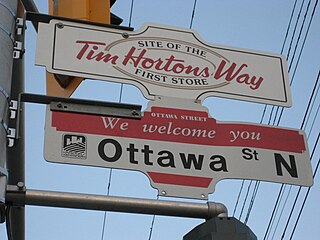
Ottawa Street is a Lower City arterial road in Hamilton, Ontario, Canada. It starts off at Lawrence Road at the base of the Niagara Escarpment (mountain) and is a two-way street throughout, cutting through the Delta and Crown Point neighbourhoods and the City's North End industrial neighbourhood. It ends at Industrial Drive, the site of the Dofasco steel company. This used to be one of the east ends' mountain access roads - it continued south over the train tracks at Lawrence Road and quickly turned right towards the brick manufacturing plant once known as Hamilton Brick. It took several turns before joining what is now the Kenilworth Access near the old water reservoir entrance. Its routing up the mountain is fairly consistent with the current Kenilworth Access with one exception - another hair-pin turn at the top; not the traffic circle that is present now. It was because of these hair-pin turns that the Hamilton Street Railway discontinued bus service on this road in 1944, and why the City planned a new Kenilworth Access to the east which opened in 1957.

Kenilworth Avenue is a Lower City arterial road in Hamilton, Ontario, Canada. It starts off at the Kenilworth Traffic Circle and Kenilworth Access, a mountain-access road at the base of the Niagara Escarpment (mountain) and is a two-way street throughout stretching northward through the city's North End industrial neighbourhood where it then flows underneath the Burlington Street bridge and right into Dofasco's Industrial Park.
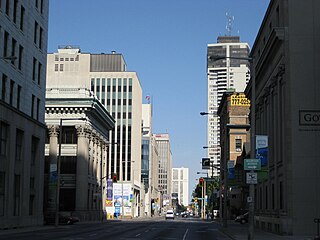
Main Street is a street in Hamilton, Ontario, Canada.
National Steel Car is the largest manufacturer of railway rolling stock in Canada, based in Hamilton, Ontario. The company was founded in 1912, and has been a top 3 rolling stock manufacturer in Canada for its lifetime. National Steel Car is a subsidiary of National Industries Inc. and is currently led by Greg Aziz, chairman and CEO of National Steel Car.